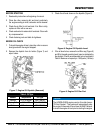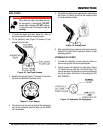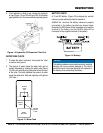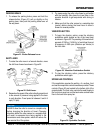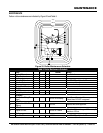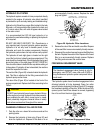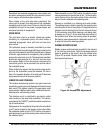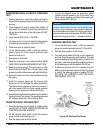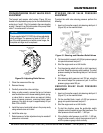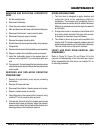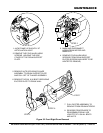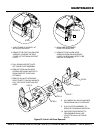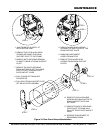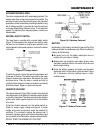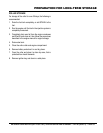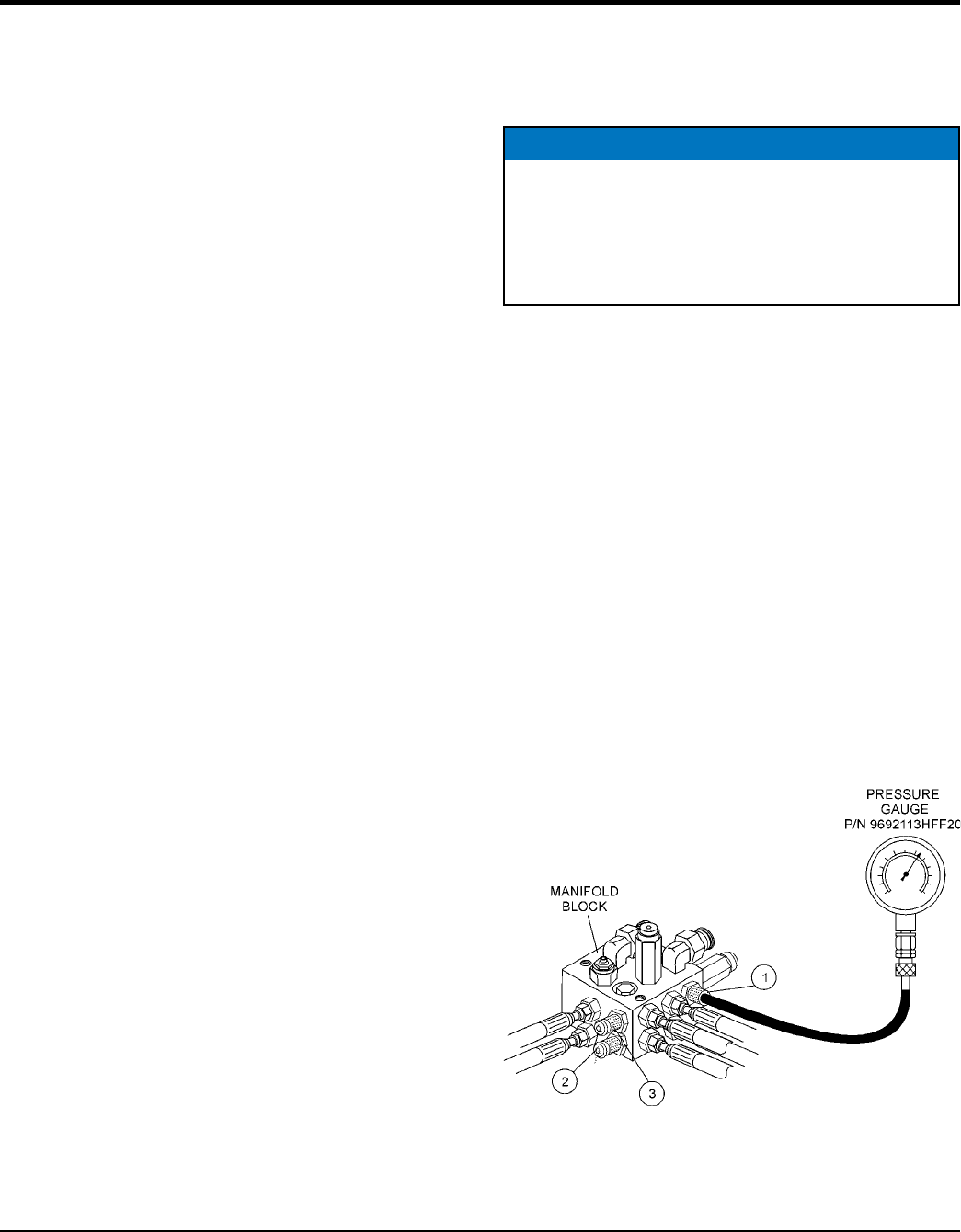
PAGE 26 — AR13HA/AR13HAR ROLLER (S/N 110301 & UP) • OPERATION AND PARTS MANUAL — REV. #0 (06/22/11)
FORWARD/REVERSE HYDRAULIC PRESSURE
TEST
1. Park the machine on a solid flat surface and stop the
engine. Set the parking brake and block the front drum
securely.
2. Check hydraulic oil level by viewing the hydraulic oil
sight glass. The hydraulic oil level must be below the
top and above the bottom of the sight glass. DO NOT
OVERFILL!
3. Adjust engine RPM (3,500 +/- 50 RPM).
4. Let engine run for 5 minutes, this will bring the hydraulic
oil operating temperature to a minimum of 135° F.
5. Check and repair all hydraulic leaks.
6. On the manifold block, install a 5,000 psi pressure
gauge (Figure 29) to the forward pressure quick
disconnect test port 2.
7. Run engine at full throttle.
8. Move the travel lever to the forward position. MAKE
SURE FRONT AND REAR DRUMS DO NOT SPIN.
9. Read the pressure gauge. The relief pressure (roller
drums blocked) will read 2,900 ± 145 psi. Under normal
operating conditions this pressure will read 400-600 psi.
10. Return the travel lever to the neutral position and stop
the engine.
11. Install the pressure gauge into the reverse quick
disconnect port 3 and repeat the above procedures.
The relief pressure reading for the reverse test port 3
will be the same (2,900 psi). Again normal operation
pressure for the reverse port will be 400-600 psi.
12. Normal operating pressures are based on the machine
traveling on level, firm surface. The operating pressures
will increase significantly when traveling uphill.
VIBRATION CIRCUIT PRESSURE TEST
1. Place the front drum on soil, gravel, or a heavy rubber
mat. DO NOT ACTIVATE VIBRATION FEATURE ON
CONCRETE OR HARD SURFACE!
2. On the manifold block install a 5,000 psi pressure
gauge to quick disconnect test port 1.
3. Start the engine and run at full throttle.
MAINTENANCE
4. To start the vibration, press the pushbutton switch
(vibration control) located on top of the travel lever.
Under normal operating conditions this pressure will
range between 900-1,500 psi.
STEERING PRESSURE TEST
1. On the manifold block, install a 5,000 psi pressure
gauge into quick disconnect test port 1 (Figure 29).
2. Start the engine and run at full throttle.
3. Turn the steering wheel to the left or right (maximum)
and hold. Read the steering relief pressure. The relief
pressure reading for the steering test port 1 will be 700
psi. Again, under normal operating conditions, pressure
for the steering port will be between 200-400 psi.
4. If maximum pressure cannot be reached, plug the
steering cylinder pressure hoses and retest. If pressure
is correct, the steering cylinder is leaking. DO NOT
ACTIVATE THE VIBRATION FUNCTION WHILE
PERFORMING THIS TEST!
Figure 29. Manifold Test Ports
NOTICE
Vibration relief pressure is hard to read accurately using
this test. It may be necessary to disconnect the pressure
line to the vibration drive motor. Plug this line and retest,
pressure will be exact relief pressure. DO NOT perform
this test for a long period of time — damage could occur.



